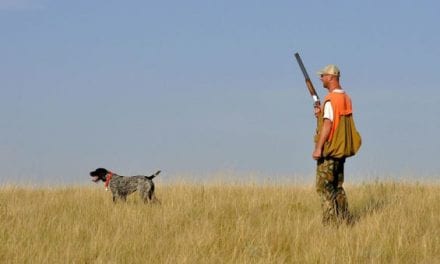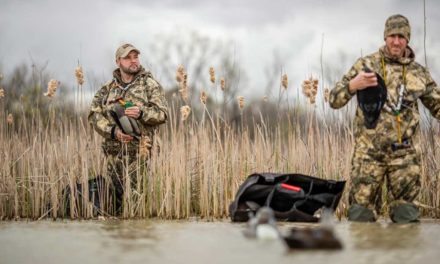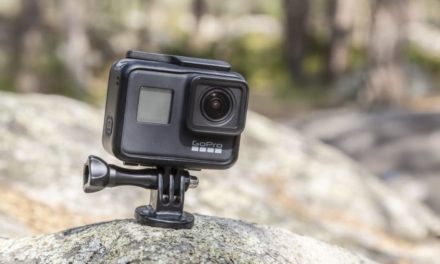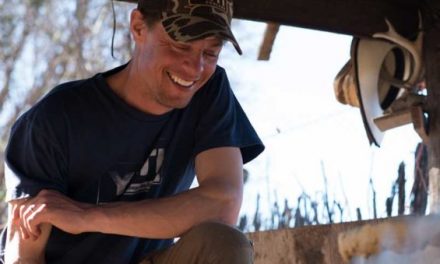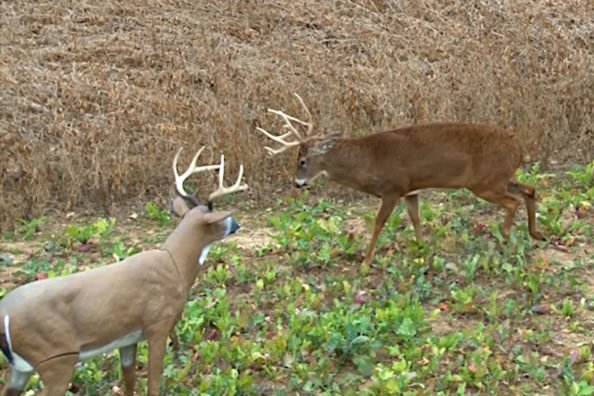
This is when you should and shouldn’t utilize decoys to attract deer.
Using decoys is a popular way of hunting for many species like waterfowl and predators. But it’s far less popular for whitetail deer. Deer hunting enthusiasts and enthusiasts of other big game just don’t take advantage of decoying like they should.
If you are interested in giving decoys a try this year, there are some things you should know.
We will go over some of the dos and don’ts of trying to harvest that big buck using a decoy and other attractants this season.
Safety first.
Before we go any further, we need to talk safety with decoys briefly. While many experts agree that decoys are effective all year-round, depending on your state and hunting ground, it may not be safe to use a decoy. For instance, we don’t recommend using a large whitetail buck decoy on public land during firearms season.
Someone may mistake your expensive new Flambeau buck decoy for the real McCoy and send a round in your direction. You can see how dangerous that can be, especially if you’re on the ground and not in a treestand. Wrap a bit of blaze orange around your decoy when transporting it in and out of the field, just so no one makes a fatal mistake.
If you’re using a decoy, make sure the others hunting in your spot know about it and what it looks like ahead of time. We also recommend not using a full-body decoy within spotting distance of a road. Just so you don’t end up being the target of an opportunistic poacher!
Deer decoys work when the deer are wary of your calls.
Almost every hunter has experienced this first scenario. You’ve got some attractant deer scents out in a rut or an early season pre rut situation. You do a game call sequence of either grunting, rattling or both. Sure enough, it catches the attention of a mature buck that has been on your trail cameras all season. But the deer is old and cautious.
Before you know it, he’s circled behind you down wind. The next thing you know, he catches a whiff of you. Then he’s gone, never to be seen again. The other annoying thing some bucks do is they act like they’re coming in on a string, but then they hang up and stop just outside of range. I know plenty of bow hunters who have experienced this sting.
If this is happening often to you, decoys can be the key piece of the puzzle. Many bucks are curious, but they’re also smart and if they can’t see that deer they’re hearing, it makes them suspicious. Especially if they’re the dominant buck of the area.
But if he come in and catches a glimpse of a young buck standing in his domain? That may be the last straw. The last thing he needs to see to convince himself that there’s a rival in the area. You can up the stakes a little more by using both a buck and doe decoy and some estrus scents. You must give that buck a good reason to throw caution to the wind.
As a side note, we should mention that this is a good method to try with a predator decoy when the coyotes just won’t commit to your calls.
When bucks are cruising in pre rut.
If you’re seeing a lot of bucks just moseying through the area past your stand or ground blind just out of range before the rut, it’s likely these deer have no real plan on where they’re going. They’re on the prowl. Sure, it may be weeks or even a month before the does start coming into heat, but they’re amped up right now and that’s not going to stop them from looking.
Many bucks are susceptible to doe bleats at this time of year. But one way you can help seal the deal is with a doe decoy and some estrus scent. A wary buck cruising the area might think he’s gotten lucky and found the first hot doe of the season before anyone else. Little does he know that doe deer decoy is a deadly temptress, luring him into crossbow range.
After the rut has passed.
Doe decoys alone can also be effective for post rut scenarios. At this point, you’ll want to be slightly less aggressive than you were during the rut. Sure, a buck and doe decoy setup can work wonders during the height of the rut, but for the post season, you’ll be trying to portray a lonely doe that somehow missed being bred.
We’d recommend against a big boss buck decoy at this stage in the game. Only because many bucks are already worn down and hungry from the rigors of the breeding season. Many have eaten only sparingly and are not going to be interested in a fight. At some point, self-preservation instincts do kick in. Some may see big antlers and begrudgingly decide they want no part, no matter how much you use deer calls.
But if he just happens to wander into the food plot and there’s a hot doe there with no other bucks around? Well, odds are, he’s going to be interested. And he may make a mistake that works in your favor.
In open country
Let’s say you’re bowhunting somewhere like Kansas or Iowa where wooded areas are few and far between, or where the bucks are cruising large agricultural areas. It can be hard to find a suitable place for a treestand. Often, you have no choice but to use a ground blind.
However, if a big buck cruises into your area and spots a new ground blind, he may immediately be suspicious. So, what’s a good way to distract him? With a good whitetail decoy of course. If you need to set up a new blind or stand in an open area where it’s hard to be discreet, odds are the buck is going to notice a decoy used in conjunction with a calling sequence before he notices your new setup. By the time he does notice, it should already be too late.
Sometimes a decoy used in the right place at the right time can turn a spot that would normally not work in any conditions into a prime spot to ambush a buck year after year. Depending on your stalking skills, you can also use a stalker decoy in open country to sneak up on a deer in places where it would normally be impossible. Just know that you’ll likely only get one chance at fooling a buck like this.
Scenarios where decoys won’t work.
While decoys work well in some scenarios, in others they may do more harm than good. These are the situations where you should probably avoid them or try another method to bring the deer in for a shot.
In early season.
We’re talking the earliest part of the season here. That may be a super-early season in late August or early September for some of you. At this time of year, the deer aren’t really in that rutting mindset yet. So, if you’re out there with a buck and doe setup complete with calls, you’re likely going to frighten away more deer than you attract.
You might be able to bring in some does in early season with decoys, but it’s probably more of a comfort thing. If they see another doe standing on the food plot you’re hunting, they might assume it’s safe. But generally, we think decoys and calls are a tad too aggressive for this time of year. It’s probably best to leave them at home until the time is right.
When hunting pressure is high.
I live here in Michigan and our firearms deer season is just brutal. Roughly half a million hunters flood the woods every Nov. 15 and the pressure from that date on forces most bucks into a nocturnal state many don’t leave until the late season or even after the seasons end after the new year.
In a situation like this, the deer are already on edge and a decoy is again, just too aggressive and unnatural of an approach. You’ve got to figure out a more stealthy and subtle way to approach the situation. Many bucks aren’t going to believe it when they see your 130-inch decoy standing in an open field. Because that deer knows he wouldn’t be caught dead out there, why would another deer?
Now, I’m not saying that decoys can’t work when the pressure is on. I’m just relating to my own experience, which indicates that they don’t.
For late-season bucks.
When I’m talking late season, I’m talking far beyond all the post-rut scenarios I talked about earlier. Here in Michigan that would be very late December. (Our season ends January 1.) For some states like Texas, that may be the middle part of January or even February. Why is decoying less effective at these times? Well, it’s simple.
At this point in the year, it’s every deer for themselves. Sure, they’re going to alert one another to the presence of danger. And many does do yard up at this point. Especially if you live in a place with bad winter weather. But at this point, most bucks are on their own and are going to be solitary until the summer when bachelor groups start forming again. They’re likely not going to believe it or be drawn to your decoys at that point.
Deer decoys are an under-utilized tactic by many deer hunters. You don’t need something super expensive. Even a simple silhouette decoy or an old archery target will do in the right situation. Give it a try this season, you may be surprised by the results!
Products featured on Wide Open Spaces are independently selected by our editors. However, when you buy something through our links, we may earn a commission.
For more outdoor content from Travis Smola, be sure to follow him on Twitter and check out his Geocaching and Outdoors with Travis YouTube channels.
NEXT: THE AXIS DEER AND HOW THEY’RE IMPACTING PARTS OF THE UNITED STATES
NEXT: 3 QUESTIONABLE HUNTING SCENARIOS: WHAT WOULD YOU DO?
WATCH
The post Do Deer Decoys Work? These Are a Few Situations Where They Do, and Some Where They Don't appeared first on Wide Open Spaces.












